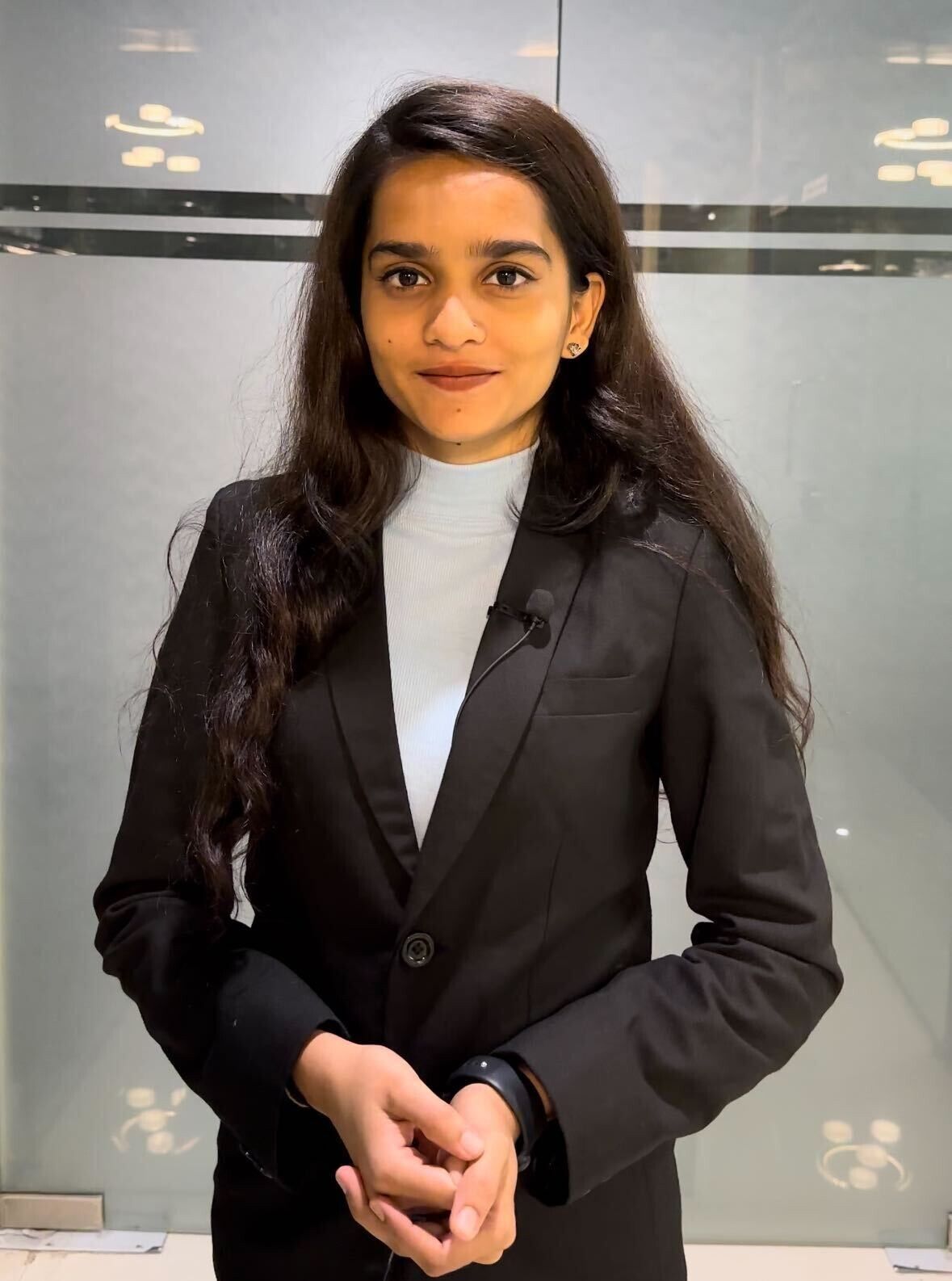
Definition of UI/UX Design
User Interface (UI) Design is about the graphical representation of an application or a website. It deals with the layout of buttons, icons, images and other components to make an attractive and user-friendly interface. UI design aims at improving the general appearance of a digital product, by making it visually attractive and easy to navigate.
User Experience (UX) Design, however, is just a part of the user experience (UX) Design. It covers all elements that a customer interacts with on the company, its services, and products. UX design comes into play in the understanding of user behavior, research work and making an experience seamless and fun. It does not stop at the visual interface but looks at the entire journey from the first interaction to task completion.
UI/UX Design is an interdisciplinary field that involves graphic design elements, psychology and human-computer interaction.It assumes an important position in shaping the way users view and engage with digital products, which in the end affects their satisfaction and loyalty.
Importance of a Strategic Approach
A strategic approach to UI/UX design involves planning and aligning design decisions with broader business goals. It goes beyond creating visually appealing interfaces and focuses on achieving specific outcomes, such as increased user engagement, conversion rates, and customer satisfaction.
Key aspects of a strategic approach include:
Business Alignment: Understanding the organization's objectives and ensuring that design choices support these goals. User-Centered Focus: Placing the needs and preferences of the end user at the forefront of the design process. Adaptability: Considering the evolving landscape of technology and user expectations, and designing with flexibility and scalability in mind. Continuous Improvement: Embracing an iterative design process that incorporates user feedback and data analytics to refine and enhance the user experience over time. Brand Consistency: Ensuring that the UI/UX design services aligns with the organization's brand identity, creating a cohesive and recognizable experience for users.
By adopting a strategic approach, organizations can leverage UI/UX design not only as a means to create visually appealing products but also as a powerful tool for achieving business objectives and fostering positive user relationships.
Brief Overview of Impactful Experiences
- Impactful experiences in UI/UX design refer to interactions that leave a lasting impression on users, positively influencing their perception of a product or brand. Such experiences go beyond functionality and aesthetics; they evoke emotions, build trust, and encourage users to engage with the product repeatedly.
Characteristics of impactful experiences include:

- Seamless Interaction: Users can navigate effortlessly through the interface, completing tasks without unnecessary complications.
- Delightful Moments: Incorporating elements that surprise and delight users, creating memorable and positive associations.
- Personalization: Tailoring the experience to individual user preferences, making interactions more relevant and meaningful.
- Consistency: Providing a consistent experience across different devices and touchpoints, reinforcing brand identity and usability.
- Feedback and Responsiveness: Offering clear feedback for user actions and ensuring the system responds promptly, enhancing the feeling of control and engagement.
Foundation of UI/UX Design
1. Principles of Good Design
Good design is the soul of UI/UX. Knowing and putting into practice main design principles is essential to have interfaces that are not only visually attractive but also functional and user-friendly. There are certain basic principles which are clarity, consistency etc.
- Clarity: Ensuring that the design communicates its purpose clearly to users.
- Hierarchy: Structuring elements in a way to direct user attention and prioritize information.
- Simplicity: Trying to achieve simplicity without losinout on the functionality.
- Feedback: Giving users clear feedback on their interactions.
2. Historical Evolution of UI/UX
The area of UI/UX design has changed quite a lot over the years. In the beginning, the emphasis was on functionality only, with beauty being irrelevant. With the evolution of technology, user experience became a priority.
- Key developments are: Pre-Computer Era: Observing how physical interfaces affected early users' interactions.
- Graphical User Interfaces (GUIs): The switch from command-line interfaces to graphical interfaces.
- Web Revolution: It was the onset of internet that brought about a new set of design problems and opportunities.
- Mobile Era: The advent of smartphones brought about a mobile ui design approach.
3. Key Components and Elements
UI/UX design is built on a series of basic components and elements that together create a seamless user experience.
- Layout: The visual elements are arranged on a page to establish a logical flow.
- Color Scheme: Strategic use of colors to convey information and evoke emotions.
- Typography: Choosing the fonts and text styles that will make reading easier and reflect the brand’s personality.
- Images and Icons: Visual elements that facilitate communication and navigation.
- Navigation: The structure and organization of the interface to help user to move.
Knowing the history of art and having a good command of these basic elements is very important for designers to construct on them and develop such meaningful, user-centered experiences. With the rapid growth of technology, these principles are an excellent starting point in terms of tackling new problems and exploiting new opportunities in this fast paced area of UI/UX design.
Understanding User Behavior
1. User Psychology in Design
The role of UI/UX design is not limited to visual appeal and functional performance, but it also encompasses the psychology of users. A designer who understands how users think, behave, and decide can create experiences that their target audience will relate to. Some of the key psychological principles are:
- Cognitive Load: Reducing the mental effort needed for interaction with the interface.
- Hick's Law: Acknowledging that an increase in choices may result in decision delays.
- Gestalt Principles: Using principles like proximity, similarity and closure to make visual communication more effective.
- Fitts's Law: Designing of interfaces that take into account the speed and accuracy of user interactions.
2. User-Centered Design Approach
User-Centered Design (UCD) is an essential approach that gives priority to the end user throughout the design process. This strategy implies a constant feedback loop and iteration, so that the end product will meet user needs and preferences. Key stages of UCD include:
- Research: Conducting in-depth user research to know their goals, pain points, and preferences.
- Design: Iteratively making prototypes and designs by user feedback.
- Testing: Checking the usability of the design through testing and gathering insights.
- Implementation: Building the final product while minding user feedback and iterative improvements.
3. Analyzing User Personas
User personas are characters that are created to represent different segments of a target audience. Analysis and development of these personas are crucial in the process of understanding the wide array of needs and preferences of users. The main features of user personas are:
- Demographics: which cover age, gender, location and other relevant demographic information.
- Behaviors that reflect how users interact with technology and make decisions.
- Goals- which identify the primary goals and motivations of each persona.
- Pain Points: Problems or issues that users might have.
Through user persona creation and analysis, designers get a clear picture of the different perspectives within their target audience. This will help in making design decisions and to make sure that the final product is customized to meet the exact needs of the people it serves.
Strategic Planning in UI/UX
1. Importance of Strategy in Design
Strategic planning is the foundation of a successful UI/UX design that gives you a roadmap for creating experiences which will not only satisfy user needs but also align with the general business goals. The essence of a strategic approach in design can be summarized as follows:
- Purpose-driven design: all design decisions are directed towards achieving overall objectives.
- Efficient resource allocation: this is aimed at maximizing the effect of design efforts and resources.
- Long term sustainability: creation of designs that are timeless and adaptable to evolving user needs.
- Competitive edge: it gives an advantage over other products in the market by delivering unique, strategic user experiences.
2. Aligning Design with Business Goals
An effective UI/UX design is not only about the looks, but also a strong instrument to achieve business goals. Harmonizing design with business goals needs teamwork of design teams and stakeholders.
- The main points to consider include: Understanding Business Objectives: Knowing what the overall aims and objectives of the organization are.
- User-Centric Business Goals: Making sure that the business objectives match with user requirements and expectations.
- Measurable Outcomes: Establishing key performance indicators (KPIs) to measure how successful the design is in meeting the business goals. Iterative
- Alignment: Continuously revisiting and adjusting design strategies to remain aligned with changing business priorities.
3. Creating a Design Strategy Framework
The design strategy framework gives a systematic way to include design into the overall organizational strategy. This structure usually consists of the following main elements:
- Research and Analysis: Market research, competitor analysis, and user research should be conducted for informing design decisions.
- Goal Setting: The clear and measurable design goals that are in line with business objectives should be defined.
- User-Centered Approach: The fact that the design strategy is based on a profound knowledge of user needs and behaviors must be ensured.
- Collaboration: Cultivating collaboration among design teams, cross-functional teams and stakeholders.
- Iterative Approach: An iterative design process is adopted for ongoing improvements and adaptation.
The organizations will be able to create a comprehensive design strategy framework which gives clear understanding of user experience vision, promotes collaboration, and guarantees that all the design efforts are supportive in realization of overarching business objectives.
The Role of Research in UI/UX
1. User Research Techniques
User research is an essential part of UI/UX design, allowing to see into user behaviors, preferences and pain points. Using a number of research techniques ensures the thorough understanding of the target audience.The main user research techniques are surveys and questionnaires that help in collecting quantitative data on user preferences and demographics.
- Interviews: Carrying out personal interviews to explore the user experiences and motivations more deeply.
- Observational Studies: Observation of users in their natural setting to understand real-world behavior.
- Usability Testing: Assessing prototypes or existing designs for usability issues and qualitative feedback collection.
- Competitor Analysis: Analyzing the design strategies of competitors to recognize the industry trends and best practices.
2. Gathering and Analyzing Data
The user experience and the user interface design effectiveness are based on deep understanding of data through research and data analysis. It involves both qualitative and quantitative data. This is one of the most important factors to consider in this
- Process: Data Collection Methods: selection of the methods that match the goals of research and project nature.
- Triangulation: Merging different data sources to achieve a complete and accurate comprehension.
- Data Synthesis: Arranging and summarizing the collected data to extract meaningful patterns and insights.
- Discovering Patterns and Trends: Recognizing common themes, behaviors, or preferences that guide design decisions.
3. Incorporating Findings into Design
The conversion of research results into actionable design choices is an important phase in the UI/UX design process. This requires the smooth combination of qualitative and quantitative insights into the design flow:
- Persona development: Developing detailed user personas based on demographical and behavioral data.
- Empathy mapping: Understanding and visualizing user emotions, pain points, and motivations.
- User Journey Mapping: The process of identifying the user's interactions and experiences at different stages of design.
- Iterative Prototyping: User feedback is integrated into design iterations for the purpose of improving and enhancing user experience. A/B
- Testing: Different design variations are tested to confirm or refute the assumptions and to maximize user interactions.
By focusing on research and data-driven insights, UI/UX designers can make designs that are user friendly, meet their needs and contribute to the success of a product or service. The cyclical process of integrating discoveries into design guarantees the development of a user-centric approach that is able to adapt to changing user needs and market conditions.
